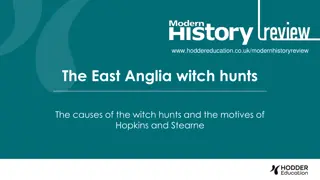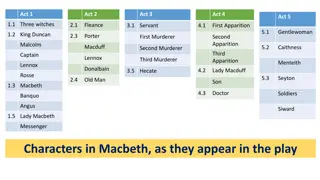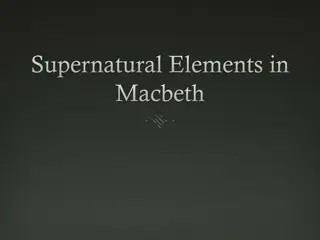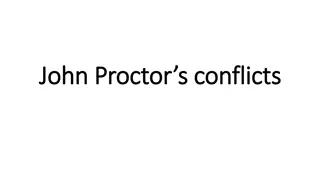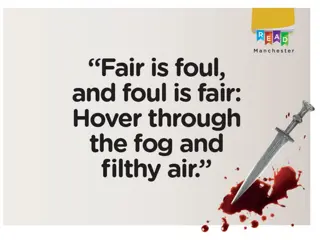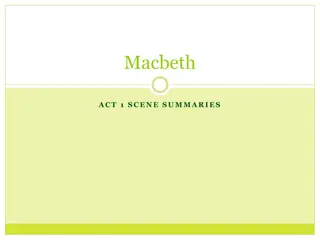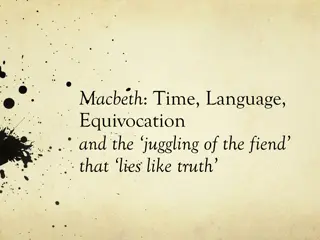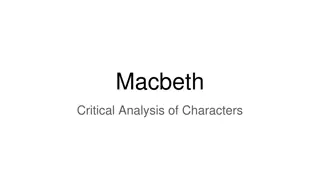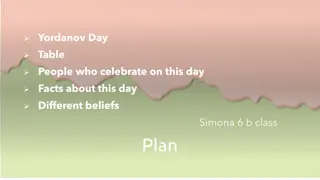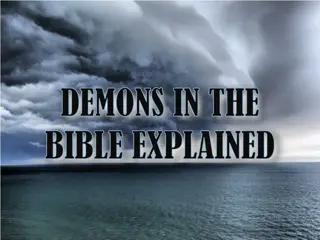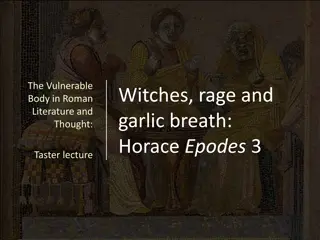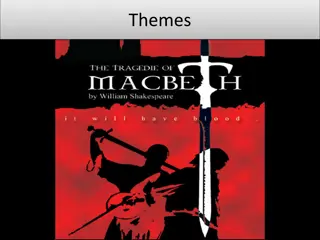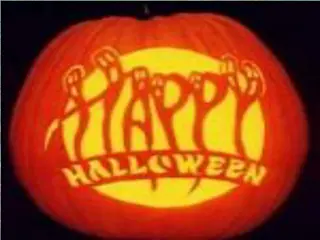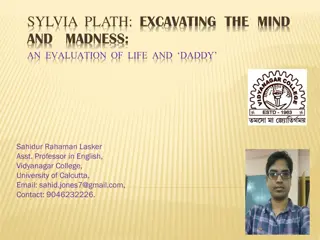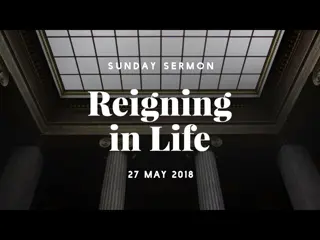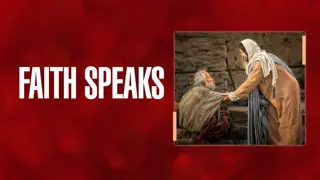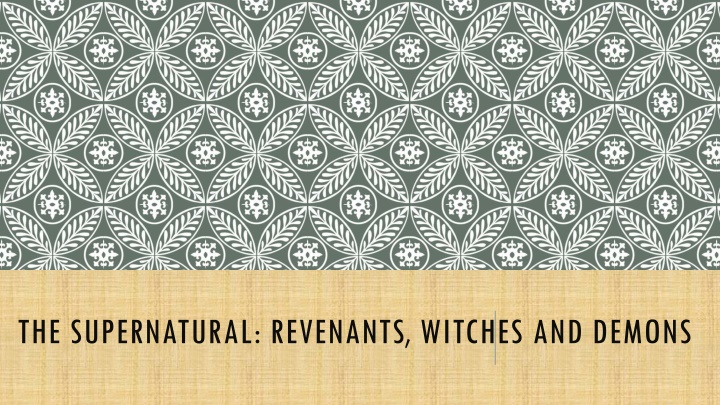
Supernatural Entities and Occult Practices Through History
Explore the intriguing history of revenants, witches, demons, and their associations with supernatural phenomena through the ages. Dive into the realms of magic, persecution, witch hunts, and demonic possession as documented in historical texts and beliefs.
Download Presentation

Please find below an Image/Link to download the presentation.
The content on the website is provided AS IS for your information and personal use only. It may not be sold, licensed, or shared on other websites without obtaining consent from the author. If you encounter any issues during the download, it is possible that the publisher has removed the file from their server.
You are allowed to download the files provided on this website for personal or commercial use, subject to the condition that they are used lawfully. All files are the property of their respective owners.
The content on the website is provided AS IS for your information and personal use only. It may not be sold, licensed, or shared on other websites without obtaining consent from the author.
E N D
Presentation Transcript
EVIL OR DIVINE ORIGIN? Julian of Norwich (c.1343-c.1416): anchoress St Hildegard of Bingen (c.1098-1179): Sibyl of the Rhine , 12thcentury abbess, mystic, visionary, saint; produced works on medicine, music and philosophy Association with women always problematic Focus on: magic & witchcraft demonic possession ghosts & revenants
MAGIC Magic is a crossing-point where religion converges with science, popular beliefs intersect with those of the educated classes, and the conventions of fiction meet with the realities of daily life (Kieckhefer, Magic in the Middle Ages) association with witchcraft: popular & elite e.g. Piers Gaveston, favourite of Edward II white magic / village magic : cunning/wise folk 12th& 13thcenturies: access to classical, Hebrew and Arabic texts; heightened elite interest in magic 14th& 15thcenturies: increased fear of black magic (maleficia); all magic demonic (condemned by theological faculty of university of Paris in 1398) Demonology (study of demons) rose to prominence
PERSECUTION Factors: increased religious fervour reaction to heresy reaction to disease increased concern about devil's agency misogyny intolerance towards minority groups centralisation processes changes to the justice system rise of demonology (study of demons)
MALLEUS MALEFICARUM (1486) By Dominican inquisitor, Heinrich Kramer malefica = female witch > pact with Satan Alpine witch (in league with devil, friendly with wolves, able to raise hailstorms) haeresis maleficarum: heresy of witches Profile of witch: worship devil, denigrate host, murder & eat babies, copulate with devil (or animal agents), render men impotent, destroy crops Even when male witches accused often thought corrupted by female acquaintance Vaudoises : Waldensians = witches
DEMONIC POSSESSION Demons exist, they are many, they are evil and they infest people (Caesar of Heisterbach, c.1220, Dialogus Miracularum) Types: succubus (female), incubus (male), but change gender/shape-shifting; provided outlet for female agency? Where find? liminal zones (William of Auvergne) Demoniac: person possessed by a demon
DEALING WITH DEMONIC POSSESSION Combat demonic possession: saintly intervention (e.g. St Nicolas of Tolentino) demoniacs no agency but not innocent either medical point of view: might be undiagnosed illnesses religious perspective: identifying cases problematic social norms: > explanation & resolution Exorcism notes: (1) identity of succubi/incubi, (2) words &/or sounds emitted by the victim, (3) actions attributed to the Devil, (4) words of the exorcist, (5) therapeutic means Differences between a demoniac and a heretic (Thomas of Cantimpr , Dominican (1201-1272)) Bodily symptoms: emit black items e.g. smoke, coal, insects (cf little demons of depictions) Communities as well as individuals: e.g. convents
GHOSTS & REVENANTS Ghosts = spirits/apparitions vs Revenants = corporeal/ walking dead (regional preferences - Caciola); William of Newburgh (1136-1198) Not heretical: evidence for existence of afterlife; allowed church to teach correct living and dying; but blend of pagan & Christian Explanations: demon-animated corpses (William of Malmesbury); repentant sinners; unshriven etc Moral lessons: e.g. Lanercost Priory (C13th & C14th): tale of excommunicated monk; Geoffrey of Burton, Life & Miracles of St Modwenna (c.1140s) Bad death: manuals on dying well (ars moriendi) Solutions: purify by burning (cf purgatory, from 1170 > doctrine 1274)
ARCHAEOLOGICAL EVIDENCE unusual burial practices involve apotropaic practices (to ward off evil) https://www.dailymail.co.uk/sciencetech/article- 2413863/Unearthed-The-Medieval-vampire-skeleton-buried- iron-stake-chest-stop-waking-witching-hour.html https://www.theguardian.com/world/shortcuts/2013/jul/16/mea ning-vampire-graves-poland Summary: Strong links between heresy, witchcraft & demonic possession Ghosts & revenants connect to pagan beliefs & afterlife Church uses to define acceptable Christian behaviour > educate & terrify

